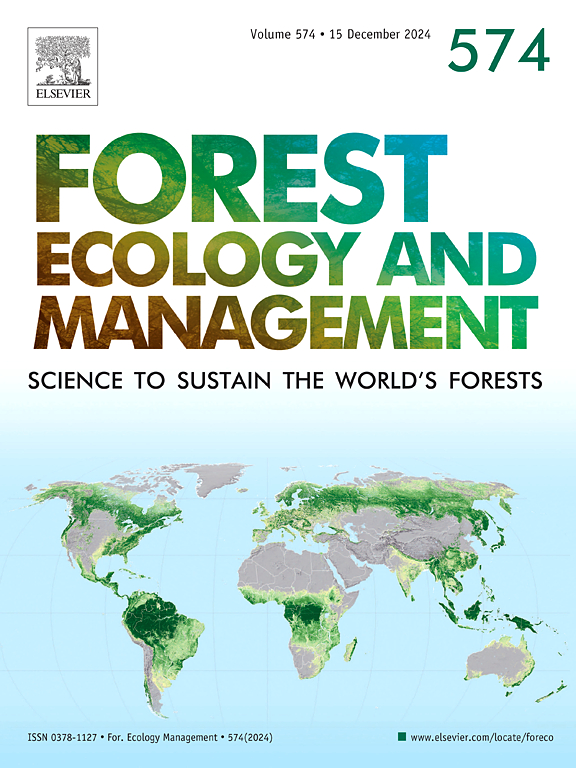Exotic plant responses to large-scale commercial logging in ponderosa pine forests of the Black Hills National Forest, South Dakota, USA
IF 3.7
2区 农林科学
Q1 FORESTRY
引用次数: 0
Abstract
Current and long-term historic commercial logging in the Black Hills National Forest provided a cost-effective opportunity to investigate exotic plant responses to a wide range of thinning intensities on a large scale. We asked two questions. First, after over 125 years of post-settlement commercial logging, what role does the pre-harvest exotic plant community play in post-harvest responses to logging. Second, how does a broad range of harvest intensities influence exotic plant responses on a large spatial scale. We averaged exotic species relative cover and relative richness to create a synthetic pre-harvest Exotic Vegetation Index (EVI) that was used as one of 15 predictor variables. The response variable was the difference between the pre-harvest and post-harvest EVI. We evaluated plots in ten widely scattered timber sales at pre-harvest and 1-, 2-, 3-, and 7-years post-harvest. In individual plots where the pre-harvest EVI was greater than 20 %, post-harvest exotic species responses were highly variable that, when averaged, the difference in EVI between pre-harvest and 7-years post-harvest was zero. In plots where the pre-harvest EVI was < 20 %, the difference in EVI between pre-harvest and 7-years post-harvest was significantly and positively correlated with harvest intensity (r = 0.65, p < 0.001). Plots with the highest levels of harvest intensity showed the greatest increases above pre-harvest values, which included several noxious weed species. In contrast, plots with the lowest levels of harvest intensity showed low levels of exotic increases with some plots exhibiting reductions in EVI below pre-harvest levels at 7-years post-harvest.
求助全文
约1分钟内获得全文
求助全文
来源期刊

Forest Ecology and Management
农林科学-林学
CiteScore
7.50
自引率
10.80%
发文量
665
审稿时长
39 days
期刊介绍:
Forest Ecology and Management publishes scientific articles linking forest ecology with forest management, focusing on the application of biological, ecological and social knowledge to the management and conservation of plantations and natural forests. The scope of the journal includes all forest ecosystems of the world.
A peer-review process ensures the quality and international interest of the manuscripts accepted for publication. The journal encourages communication between scientists in disparate fields who share a common interest in ecology and forest management, bridging the gap between research workers and forest managers.
We encourage submission of papers that will have the strongest interest and value to the Journal''s international readership. Some key features of papers with strong interest include:
1. Clear connections between the ecology and management of forests;
2. Novel ideas or approaches to important challenges in forest ecology and management;
3. Studies that address a population of interest beyond the scale of single research sites, Three key points in the design of forest experiments, Forest Ecology and Management 255 (2008) 2022-2023);
4. Review Articles on timely, important topics. Authors are welcome to contact one of the editors to discuss the suitability of a potential review manuscript.
The Journal encourages proposals for special issues examining important areas of forest ecology and management. Potential guest editors should contact any of the Editors to begin discussions about topics, potential papers, and other details.
 求助内容:
求助内容: 应助结果提醒方式:
应助结果提醒方式:


